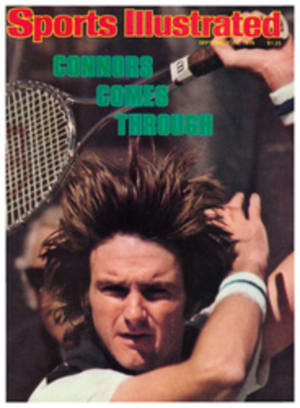
A WEST COAST TRANQUILIZER: PUT THE WEARY BOD IN A TUB OF HOT WATER
Don't look now but one more California fad—or innovation or godsend, depending on how you look at it—is making its way across our land, though, surprisingly, without the usual accompaniment of fanfare and hoopla. Montana wheat farmers, usually a sober lot, have joined the craze, as have folks in San Antonio, Chicago and even as far east as Westchester County, N.Y. Clearly, the time to get into a "hot tub," America's latest tranquilizer, has arrived.
Bob Ficker, president of Pacific Northwest Hot Tubs, located in a suburb of Seattle, where tubs are currently all the rage, believes his company gets most of its business by word of mouth. Somebody sits in somebody else's hot tub and likes it. Recently Ficker finished installing one on the upper deck of a houseboat on Lake Union in Seattle, and he expressed only mild surprise when a client flew in from Washington, D.C. and ordered not one but two tubs—the second for cold water, enabling the tubber to leap from hot to cold. "I consider that the ultimate in masochism," says Ficker, who has sold and installed more than 250 tubs since he went into business three years ago. His list of customers also includes Running Back Don Testerman of the Seattle Seahawks, whose favorable reaction to the therapeutic qualities of his new six-by-four-foot tub sent a number of other members of the football team to Ficker's door for tubs of their own. Pacific Northwest Hot Tubs Inc. (14802 N.E. 31st Circle, Redmond, Wash. 98052) now sells do-it-yourself kits, and sales this year have boomed. "Installing the plumbing is the only tricky part," Ficker says. "Otherwise, it's fun putting it all together." Potential hot tub owners, however, should make sure that the kits they purchase are from reputable companies. Ficker received a call from a woman whose husband had bought a kit from a fast-buck operator in California (30,000 hot tubs were sold in that state last year) but found the package incomplete and the instructions impossible to follow. "My husband just threw the hammer through the garage window," the woman told Ficker.
A hot tub holds 500 to 700 gallons of water and is heated by electricity or gas, whichever is appropriate in your neck of the woods. Gas heats the water slightly faster than electricity. Tubs are made of either redwood or cedar, which swell as the water heats up. A pump and a heater keep the water warm and circulating, while a dash of chlorine and a filter keep it clean. Timers are available to turn the heater on automatically while the weekend athlete is out on the playing fields working up some sore muscles. If the owner follows the proper maintenance procedures, the water in a tub five feet in diameter and four feet deep will have to be changed only every four months or so.
The five-footer might be called the small economy size and will suit those who enjoy soaking in solitude. The most popular size, however, measures six feet across, while an eight-foot tub will hold as many as 12 friends who happen to drop in. All tubs have sating benches inside. For a touch of luxury, a deck running around the outside can be added. Though the water is usually heated to around 102° to 106°, some hardy lubbers, the wrinkled-skin set, have been known to boost the temperature as high as 110°. The best time for soaking, according to Ficker, is when the outdoor temperature drops to 30° or lower.
Eighty-five percent of the tubs Ficker installs are outside the house, either in the yard or on the patio, and many of his customers are young couples buying their first home. Prices range from $1,700 to $2,500 for complete tubs. Kits are $400 to $500 cheaper. Two hydrotherapy jets are standard features, though some customers order more. Other options include walkways, trellises and landscaping.
So what makes a hot tub better than a bathtub filled with steaming water? It's deeper, the water doesn't cool off and it can be used outdoors. And what makes it better than a heated swimming pool? The tub doesn't take up as much room, it's cheaper and it's friendlier.
"The hot tub is not a luxury: it's pure decadence," says Peggy Wilkerson of Kirkland. Wash., who last June invited four couples to join her and her husband in their tub to watch TV as the Seattle SuperSonics lost to the Washington Bullets.
Ficker's wife used their tub throughout her pregnancy. "It took the weight off," she says. Ficker, who grew up in Oregon, remembers walking as far as 20 miles to enjoy soaking in natural hot springs. He admits that the tub is a "frill" but denies that it is wasteful of energy. "It costs about as much energy a year as driving a car 150 to 200 miles," he claims.
Ficker believes the idea for hot tubs came to America by way of Japan and Korea. American GIs got a taste of Oriental "steeping tubs," and Californians returning from those countries at first pressed old wine casks into service but soon found them a nuisance because the uncirculated water had to be changed so often.
There is nothing wrong with putting a hot tub in the house, but to dedicated lubbers this seems mundane. As to the inevitable question of whether or not to wear bathing suits, that depends on one's life-style and the attitudes of people invited to a hot tub party. "Bathing in the buff is a more sensual experience," says Ficker.
You say it's the football season? Emulate John Hurleen, who lives in Redmond. As he did last year, Hurleen will invite five or six buddies over for the evening, place six-packs within easy reach and, when everyone has settled into the eight-foot tub, turn on the television set for Monday Night Football.

